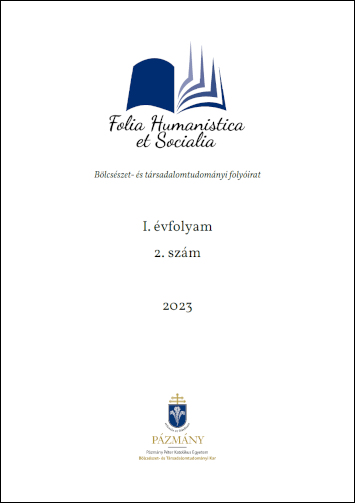Hogyan csinálják? Autizmussal élő felnőttek szókincstanulási stratégiái az angol mint idegen nyelv tanulásában: Interjú-alapú tanulmány
Megjelent 2023-12-31 — Frissítve ekkor: 2024-06-11
Copyright (c) 2023 Tar Lilla

This work is licensed under a Creative Commons Attribution 4.0 International License.
Absztrakt
Az utóbbi időben egyre nagyobb figyelmet kap az a kérdés, hogyan tanulnak az autisták. Az eddigi kutatások azonban nem foglalkoztak a nyelvtanulási stratégiákkal. Ez a tanulmány, mely MEd szakdolgozatomon alapul, felnőtt autisták szókincs tanulással és -tanítással kapcsolatos szemléletmódját kívánja bemutatni. Az adatgyűjtés a szakirodalom alapos áttekintése után, 2023 elején törtszént. A résztvevők (N=10) 60 perces mélyinterjúkon vettek részt online. Az eredmények szerint, a legtöbb válaszadó nem vizuális tanuló, annak ellenére, hogy a szakirodalom egy részében ezt állítják. A megkérdezetteknek nagyon eltérőek az egyéni erősségeik, preferenciáik és nehézségeik. Néhányan nagyon erős asszociációs rendszert használnak, viszont küszködnek a nyelvtanulás társas aspektusaival. A szókincstanulási stratégiák közül leginkább a jelentés szövegkörnyezeten alapuló kitalálását, illetve egyéb kontextus-alapú módszereket használnak. A válaszadók fele kifejezte, hogy szeretne javítani a szókincstanulással kapcsolatos módszerein.
Hivatkozások
- American Psychiatric Association (2013). Diagnostic and Statistical Manual of Mental Disorders (5th ed.). American Psychiatric Association.
- Anki. (2016). Anki — powerful, intelligent flashcards. Ankiweb.net. https://apps.ankiweb.net/
- Asperger, H. (1991). “Autistic psychopathy” in childhood. In Frith, U. (ed.), Autism and Asperger syndrome (pp. 37–92). Cambridge University Press.
- Attwood, T. (2007). The complete guide to Asperger’s syndrome. Jessica Kingsley Publishers.
- Caldwell-Harris, C. L. (2022). Passionate about languages, but listening and speaking – ¡Ay, Caramba! Autistic adults discuss foreign language learning. Journal of Multilingual and Multicultural Development, 1–16. https://doi.org/10.1080/01434632.2022.2029869
- Digard, B. G., Sorace, A., Stanfield, A., & Fletcher-Watson, S. (2020). Bilingualism in autism: Language learning profiles and social experiences. Autism, 24(8), 2166–2177. https://doi.org/10.1177/1362361320937845
- Garrity, M., McGlowan, T., Chen, S., Wall, J., Alonso, M. R., Lomasney, M., Nguyen, V. & Caldwell-Harris, C. L. (2018). Adults with autism discuss their experiences of foreign language learning: an exploration of the “different strategies” hypothesis. Open.bu.edu. https://hdl.handle.net/2144/37459
- Győri, M. (2014). A nyelv, a kommunikáció és a megismerés atipikus mintázatai és kapcsolatai autizmus spektrum zavarokban. In C. Pléh & Á. Lukács (eds.), PSZICHOLINGVISZTIKA - Magyar pszicholingvisztikai kézikönyv. Akadémiai Kiadó. Happé, F. & Frith, U. (2020). Annual Research Review: Looking back to look forward – changes in the concept of autism and implications for future research. Journal of Child Psychology and Psychiatry, 61(3), 218–232. https://doi.org/10.1111/jcpp.13176
- Hashim, H. U., Md Yunus, M., & Norman, H. (2021). English As Secondary Language Learning and Autism Spectrum Disorder: The Obstacles in Teaching and Learning the Language. Arab World English Journal, 12(2), 22–30. https://doi.org/10.24093/awej/vol12no2.2
- Hebron, J. & Bond, C. (2019). Education and Girls on the Autism Spectrum. Jessica Kingsley Publishers.
- Lukács, Á., Pléh, C., Kas, B., & Thuma, O. (2014). A szavak mentális reprezentációja és az alaktani feldolgozás. In C. Pleh, A. Lukacs, & P. Siptar (eds.), Pszicholingvisztika: magyar pszicholingvisztikai kézikönyv (Vol. 1). Akadémiai Kiadó.
- Maykut, P., & Morehouse, R. (1994). Beginning qualitative research: a philosophic and practical guide. Taylor & Francis.
- Mirenda, P. (2014). Augmentative and Alternative Communication. In F. R. Volkmar, S. J. Rogers, R. Paul, & K. A. Pelphrey (eds.), Handbook of Autism and Pervasive Developmental Disorders. Volume 2: Assessment, Interventions, and Policy.
- Mizumoto, A. (2010). Exploring the art of vocabulary learning strategies: A closer look at Japanese EFL university students. Kinseido.
- Nation, P. (2022). Learning Vocabulary in Another Language (3rd ed.). Cambridge University Press. https://doi.org/10.1017/9781009093873
- Oxford, R. L. & Griffiths, C. (2016). Teaching and researching language learning strategies: self-regulation in context (1st ed.). Taylor Et Francis Group.
- Rezvani, M. (2017). An Investigation into the Influence of Montessori Method on Professional Development of EFL Teachers and Productive Skills of Students with Autism [Thesis]. Eastern Mediterranean University http://irep.emu.edu.tr:8080/xmlui/bitstream/handle/11129/3841/rezvanimahsa.pdf?sequence=1
- Thekes, I. (2016). Assessing Young Hungarian EFL Learners’ Vocabulary and Learning Strategies [PhD Dissertation]. Szeged. https://doktori.bibl.uszeged.hu/id/eprint/3094/1/Thekes_doktori_ertekezes.pdf
- Vermeulen, P. (2012). Autism as context blindness. Aapc Publishing.
- Vermeulen, P. (2022). Autism and The Predictive Brain (1st ed.). Taylor & Francis.
- Volkmar, F. R., Reichow, B., Westphal, A., & Mandell, D. S. (2014). Autism and the Autism Spectrum: Diagnostic Concepts. In F. R. Volkmar, S. J. Rogers, R. Paul, & K. A. Pelphrey (eds.), Handbook of Autism and Pervasive Developmental Disorders. Volume 2: Assessment, Interventions, and Policy.
- Volkmar, F. R. & Wiesner, L. A. (2021). A practical guide to autism: what every parent, family member, and teacher needs to know (2nd ed.). John Wiley & Sons, Inc.
- Webb, S. & Nation, P. (2017). How Vocabulary is Learned. Oxford University Press.
- https://doi.org/10.1075/itl.00015.pau
- Yahya, S., Yunus, M. M., & Toran, H. (2013). Facilitating ESL Students with Autism Learn Sight Vocabulary: Teachers’ Practices and Voices. International Journal of Sciences: Basic and Applied Research (IJSBAR), 11(1), 90–98. https://core.ac.uk/download/pdf/249333552.pdf

